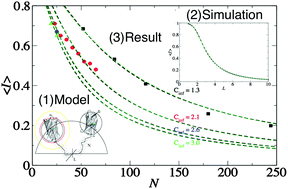How flexible is a protein: simple estimates using FRET microscopy†
Abstract
Flexible proteins are frequently used to link subunits of larger complexes in various contexts, for instance, in the construction of unimolecular sensors used in FRET microscopy, and fusion proteins. How flexible such linkers are can be an important question in the overall design of the complex, and yet sometimes suprisingly difficult to establish. Such difficulties can arise because the actual flexibility of a protein depends significantly on its interactions with the solvent, and when the local environment is a subcellular compartment, even the conditions of the solvent, may not be known. In this communication we propose a simple numerical procedure through which the flexibility of such proteins can be extracted from FRET based microscopy data.


 Please wait while we load your content...
Please wait while we load your content...